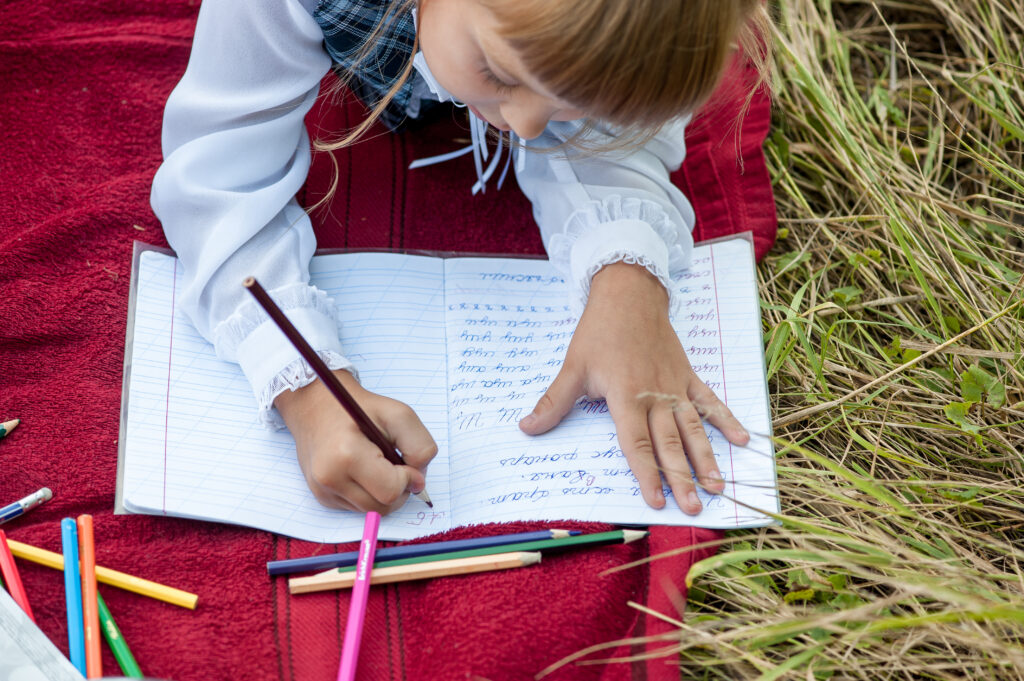"He writes like a chicken with his paw", "he has medical handwriting" - many Russians understand these phrases. All these jokes are related to writing, namely, how a person shows himself on paper. Foreigners studying Russian wonder why Russians still learn to write beautifully at school. After all, writing has long ago moved to smartphones and typing characters on a keyboard. But really - why? Why do Russian schools still pay a lot of attention to penmanship - the art of beautiful capital letters and texts without blots? Is there any scientific justification for the benefits of beautiful handwriting or is it just a school tradition? Let's find out in our article.
History of the emergence of written Cyrillic alphabet
To begin with, let us turn to history. When the Cyrillic alphabet appeared in Russia at the end of the 10th century, the spread of education began. The fact that in the Middle Ages children were taught literacy is evidenced by birch bark writings. Onfim's boy's diplomas. They were found during archaeological excavations in Veliky Novgorod. People needed to copy books and chronicles, keep records in trade affairs, and this required fast writing. It was still a long way from printing.
Over time, the Cyrillic symbols were simplified, and a special style for letters and documents was developed - cursive writing. This is where Russian handwriting, which is still taught in schools, evolved from it.

How penmanship was taught in the 19th century
The first attempts to introduce the teaching of beautiful writing in schools appeared in the middle of the 19th century. At that time, they began to publish manuals on cursive writing, as the written letters of the Russian alphabet were called. For example, "Course of cursive writing" by V. Polovtsev (1843).
And there were disputes about penmanship even then. The point is that originally ink and goose quills were used for writing. Accordingly, there were certain rules for writing letters. Now, of course, it is hard for us to imagine, but children were scolded for too weak or too thin pressure. And this was seriously evaluated by teachers, and children had to rewrite their handwriting many times.
When steel pens appeared in the 19th century, the rules had to be revised. It was easier to write with these pens, and bold, semi-bold and thin lines were no longer necessary.
Teaching Russian writing in Soviet times
In 1927, penmanship became a separate subject in Soviet schools. Children learned to write beautifully, with a slant, without blots. All this developed diligence and a neat attitude to writing. They still wrote with ink, so they had to try to write continuously without blotting.
With the advent of ballpoint pens in the 1970s, the rules of written letters were revised again. Once again, they were simplified. In the same years, penmanship as a separate subject was removed from schools. And writing letters is given attention only at the beginning of the first grade, when children learn the alphabet.
How the written alphabet is taught in schools these days
Despite the development of computers and other gadgets, Russian schools still pay a lot of attention to handwriting. Especially in elementary school. It is believed that developing beautiful handwriting helps a child to develop his or her speech. In addition, children learn to think and develop their visual memory.
Of course, nowadays there is no separate penmanship lesson. Therefore, teachers have to help children learn all the elements of letters and connect them into a whole in a few lessons. Nowadays, children are not forced to rewrite their penmanship several times, as they were a hundred years ago. And it is impossible to predict whether children will be learning beautiful, coherent letters in notebooks half a century from now.


Pros and cons of teaching written Russian
In addition to technological reasons, many critics of the written alphabet cite the fact that as adults, people write illegibly. Beautiful school handwriting fades over time, and everyone acquires their own individual style. At the same time, many people write letters in a semi-printing style, not connecting all the letters in words. Interestingly, there is an entire science devoted to the study of handwriting. graphology. According to her, each person's handwriting is unique because it depends on character and other features.
It turns out that schools teach children the same handwriting for nothing?
Not at all. In addition to improving graphomotor memory, writing practice improves a child's overall literacy. After all, it is known that the more a person writes by hand, the more developed his or her speech becomes. Besides, handwriting develops imagination and intelligence. Therefore, there is no question of completely eliminating handwriting from the Russian school program.
What's it like in other countries around the world?
It is interesting to see if uppercase Latin is taught in countries where it is common. Let's not take into account China or the Arab countries, with their special graphic systems.
Besides, Latin is the closest to Cyrillic in spelling and also has two alphabets - printed and handwritten.
In the United States, there was also a penmanship class throughout the 20th century. The most popular method of teaching written Latin was the Palmer method.
In the 70s and 80s, many schools abandoned teaching the written alphabet. Nowadays, most children write with block letters and a simple pencil. Although in recent years there have been attempts to bring penmanship back to schools. But, rather, as an optional subject, rather than part of the educational process. The reason is the same - scientists' research on the positive effect of writing on brain activity.
In Canada, handwriting instruction in schools was eliminated in 2006, but, a few years later, in 2023 the authorities have returned it into the school program. Starting in the third grade, children are now learning beautiful writing again.
In the UK, as in Russia, children learn to write English in written letters from elementary school.
Obviously, computerization and the lack of the need to write by hand in everyday life does not eliminate this school skill completely. After all, school education is a complex education of a child and the development of his or her various abilities. And the argument that it will be of little use in adulthood should not be at the top of the list. After all, few people will need to calculate the area of a triangle and calculate percentages in their minds. But we do not reduce the study of math to simple addition and subtraction.
In our online school. in Russian class children also learn written letters. At the Elementary level, children learn to write individual letters in handwriting. And from Beginner level, children learn to write compound words in a handwriting book.
It is free to try any classes at Palme School. To make an application, fill in the form below and our manager will contact you.







